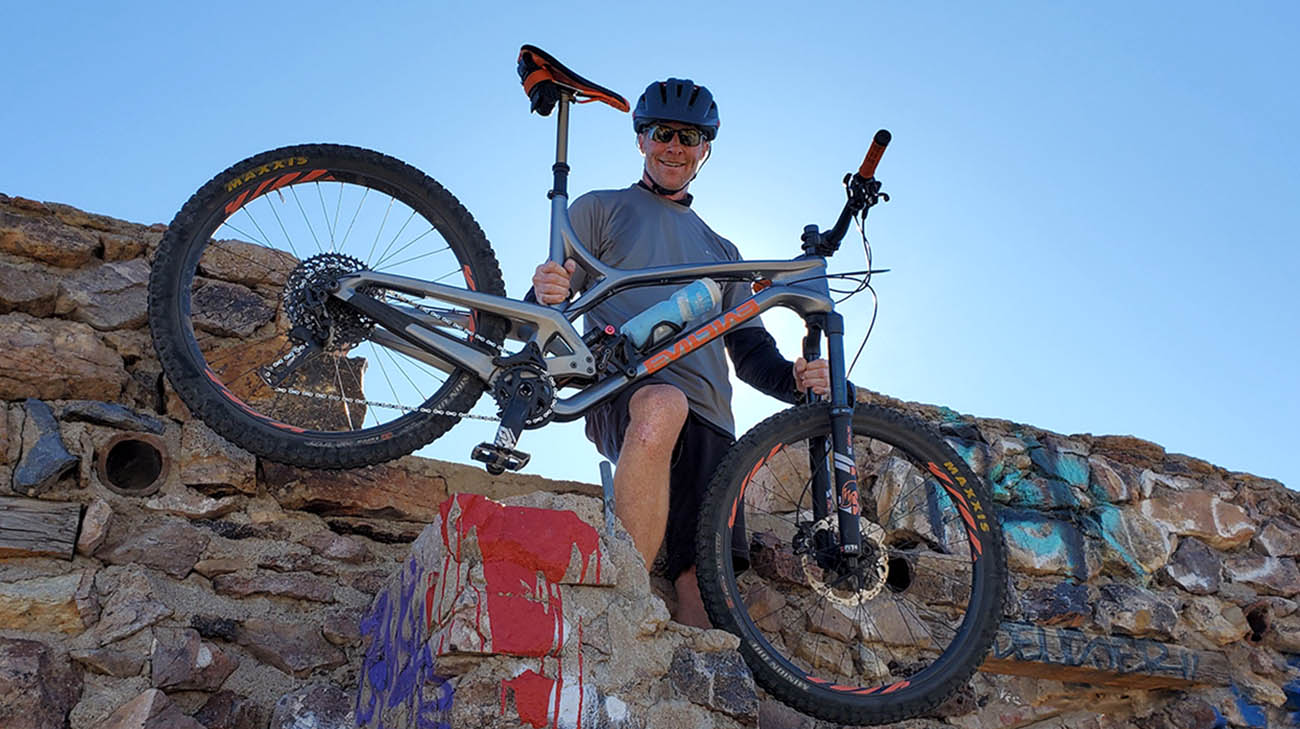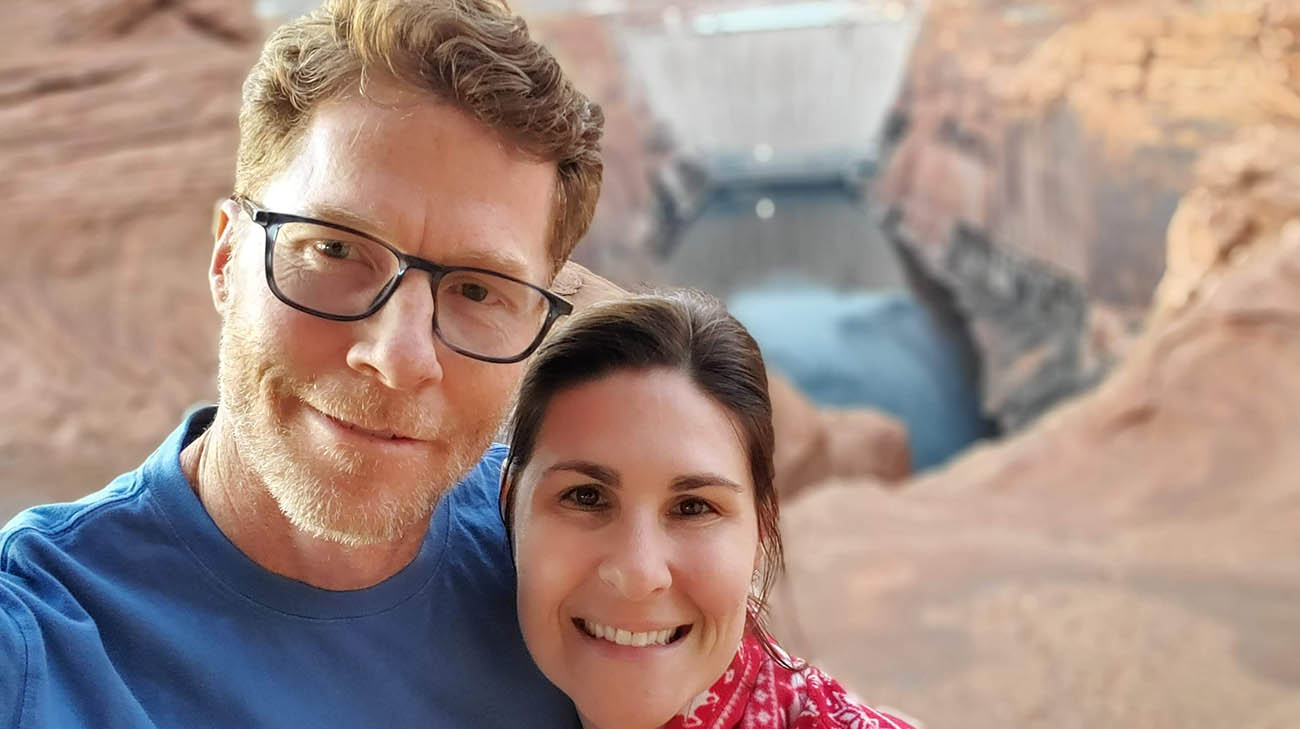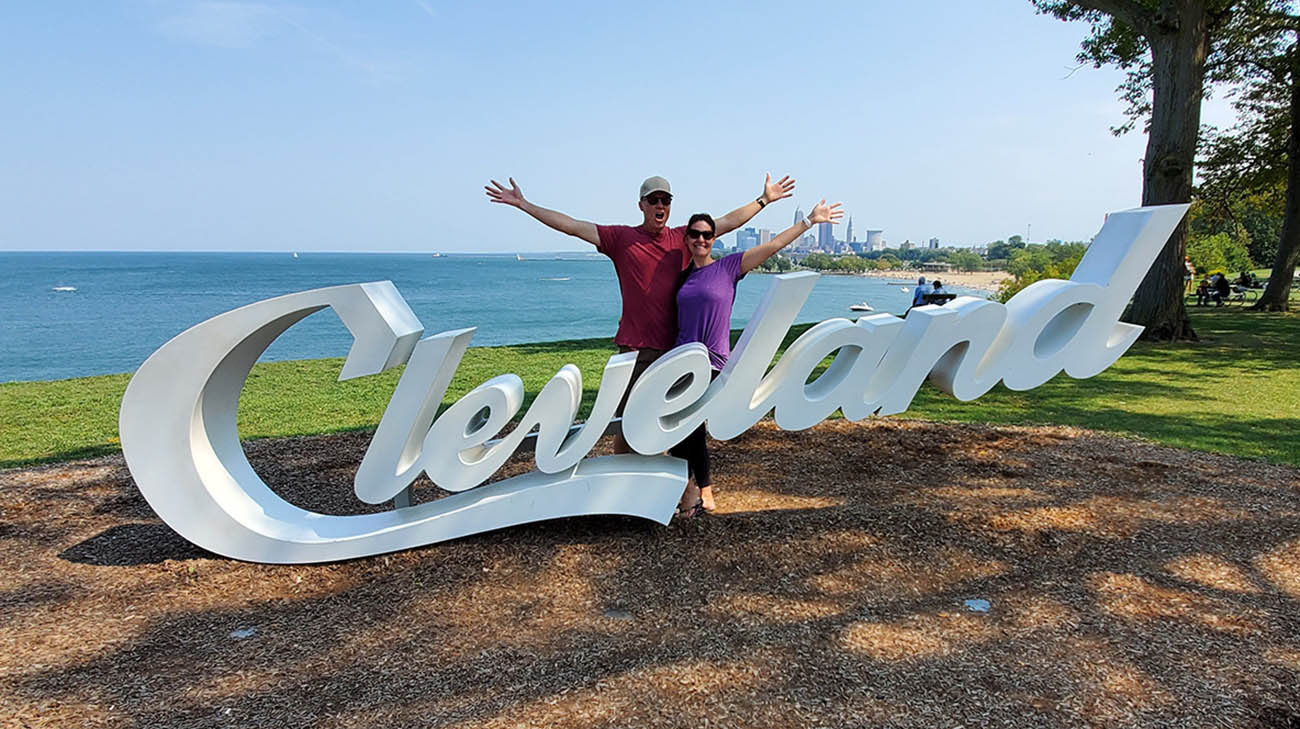
Lunch was just being served to Don Abbott and his wife, Lindsay, at a Cleveland, Ohio, restaurant when he got a call from a Cleveland Clinic cardiologist.
In three days, the 55-year-old Tucson, Ariz., resident would be undergoing a relatively routine, minimally-invasive surgical procedure to repair a leaky mitral valve in his heart. So, he just assumed the call was a follow-up from a pre-op consultation earlier that day.
He was wrong. “The doctor said, ‘I need you to come back right now,’” recalls Don.

Don with his wife, Lindsay. (Courtesy: Don Abbott)
Minutes later, Don was shocked to learn he had another, much more serious condition that would need to be addressed during surgery, one that would require the involvement of cardiothoracic surgeon, Gosta Pettersson, MD, days before he would retire and return to his native Sweden.
One of the many pre-operative tests Don underwent revealed the presence of partial anomalous pulmonary venous return (PAPVR), a congenital heart disease in which some (but not all) of the four veins that enable blood to flow between the lungs and heart are connected in the wrong place. As a result, for his entire life, some of Don’s oxygen-rich blood would remain in his heart rather than being delivered to other parts of his body, as intended.
According to Marc Gillinov, MD, who ultimately performed Don’s mitral valve repair, PAPVR is extremely rare in adults.
“When it’s seen, it’s almost always detected in a newborn baby and repaired then,” explains Dr. Gillinov. “It’s kind of remarkable he was able to be so active and in such good shape his entire life. It must have felt like he was going through life with five-pound weights on each ankle.”

Don travelled to Cleveland, Ohio, from Tucson, Ariz.,so Cleveland Clinic cardiothoracic surgeons could repair a leaky mitral valve. He was shocked to learn he'd been living with a separate congenital heart condition. (Courtesy: Don Abbott)
The fact that Don’s PAPVR was undetected for decades suggests the problem was relatively asymptomatic for much of Don’s life. However, from his youth through his mountain-biking middle age, Don has frequently been frustrated by his inability to keep up with friends and colleagues during a casual run or an intense bike race.
“My whole life, I have always been very active. And it used to annoy me as a kid that I could never run as long or as far as my younger brother, who was a long distance runner,” Don states. “I was really fast in short bursts, but any longer distance was difficult. I would feel like I was breathing through a wet blanket.”
Still, Don – quite literally – soldiered on. Stubborn and determined, he would rigorously train to get into the best condition he could, a character trait that served him well in the Army during its demanding physical fitness test, when he was able to push through fatigue to complete the two-mile run within the required time.

Don always pushed through physical fitness tests during his time in the Army. Unbeknownst to him, he was living with a congenital heart condition that brought about fatigue and challenged his breathing and endurance. (Courtesy: Don Abbott)
By then, Don had visited a number of pulmonologists, one of whom diagnosed him as having exercise-induced asthma after coming down with a case of walking pneumonia while in college. Off and on, for years, Don would use an inhaler but never really felt like his “wet blanket” breathing would improve.
As time passed, he built a career as a videographer, and most recently, as the owner/president of a video production and animation company. In his free time, Don would continue to delve into active sports, with his interest in mountain biking intensifying about 10 years ago. So, too, did his health issues.
“We’d go on these 3-hour rides, and it got more difficult for me to keep up,” Don continues. “I got tired of my friends beating me sizably going up mountains. Why can’t I keep up? I know I’m in better shape than they are.”
As his breathing and endurance issues worsened, Don’s local pulmonologist recommended he see a cardiologist. In 2021, the cardiologist detected the problem with Don’s leaking mitral valve. That condition, which is relatively common, occurs when a failing valve allows a portion of blood to recycle back into the heart instead of flowing freely out of the heart.

Don is working his way back into shape, riding about 40 miles per week and training regularly at the gym. (Courtesy: Don Abbott)
As it turns out, the leaking mitral valve may have saved Don’s life. Referred by his cardiologist to Dr. Gillinov, Don is convinced his PAPVR may otherwise never have been detected. “The mitral valve problem was a blessing,” he affirms. “Without it, I don’t know what would have happened to me later.”
With the fortuitous, last-minute discovery of Don’s PAPVR problem, a team of experts assembled in a Cleveland Clinic operating room to address both heart issues. First, Dr. Gillinov surgically repaired Don’s mitral valve. Then, it was time for the more complex operation.
Dr. Pettersson, with Dr. Gillinov and another cardiac surgeon assisting, undertook the intricate task of rerouting the wayward veins, connecting them to the proper chamber of Don’s heart. After about five hours, the job was complete. Within a few days, Don was up and moving around. Within a week he flew back home to Tucson to continue his recovery.
Dr. Gillinov says Don’s heart is in great shape, and that he should no longer experience any fatigue or shortness of breath. “His operation is pretty much a cure. It would be very unlikely he ever has a heart issue again.”
Today, he is working his way back into shape, riding about 40 miles per week and training regularly in the gym, as prep for a mountain bike race in April 2022. At last, after more than 40 years of suffering, his breathing and endurance issues have faded away.
“It’s frustrating this was undetected for so long,“ he says. “But I’m grateful these doctors found it. I was in the right place, with the right (physicians), at the right time.”
Related Institutes: Heart, Vascular & Thoracic Institute (Miller Family)

